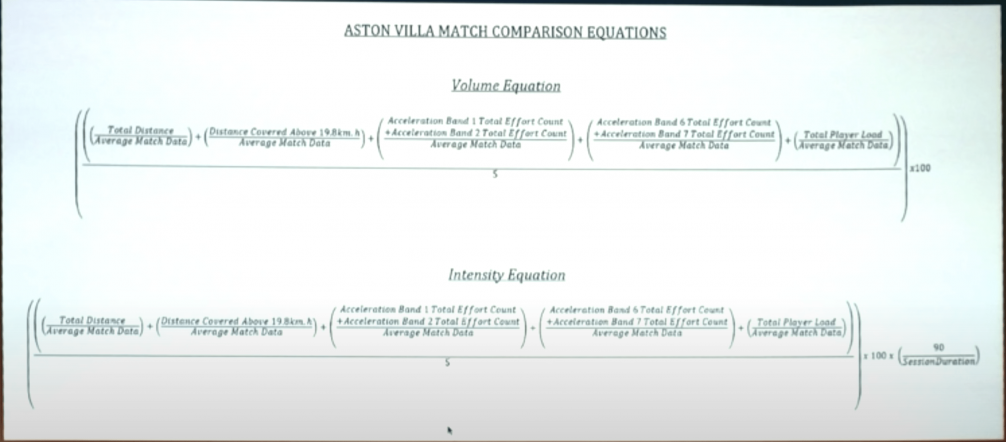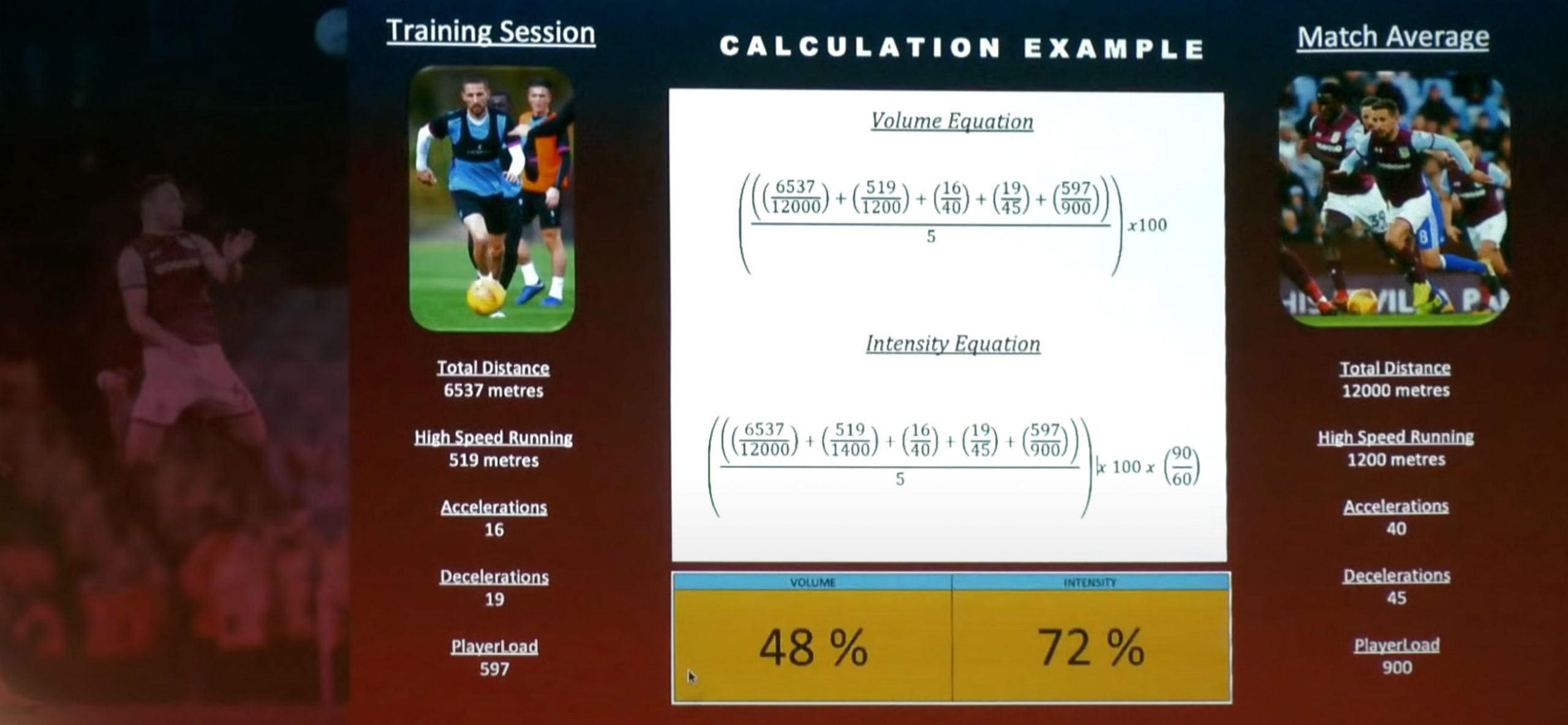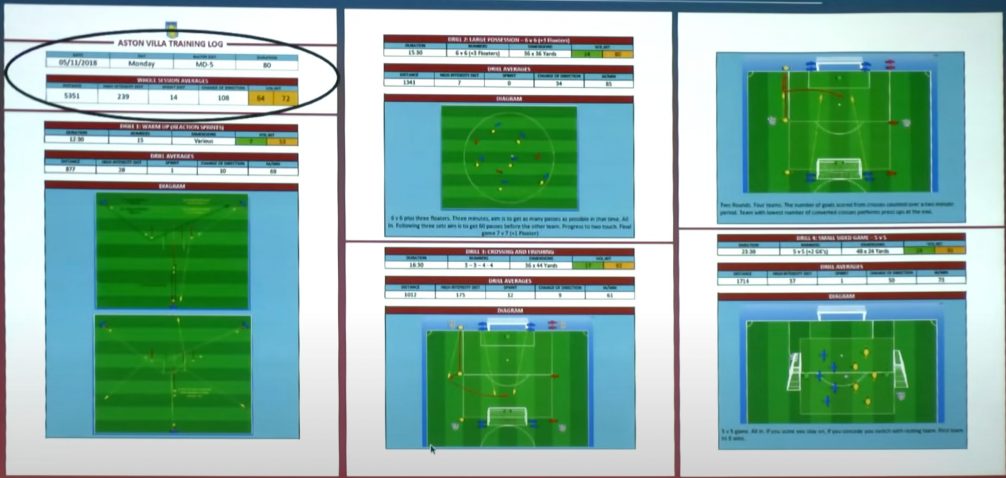Aston Villa are modernising their approaches to almost every aspect of their football practices – not only are Dean Smith’s side competing amongst the upper reaches of the Premier League again but behind the scenes, Villa are leaving no stone unturned.
Since gaining promotion back to the Premier League in 2019, the club have appointed a new Sporting Director, turned their attention to the smallest of details off the pitch, and even created new analytics-based roles.
Johan Lange was head-hunted from Copenhagen last summer, while his former right-hand man in Denmark, Frederic Leth was also prized to Villa Park in recent months. While Lange has proved an influential member of Villa’s resurgence in the Premier League by involving himself in most of the club’s operations, his partner, Leth has since undertaken a Head of Football Research role at the club.
Leth’s numerical expertise and experience in similar roles when working alongside Lange will prove beneficial to Villa’s approach to in-house operations, but with results on the pitch a matter of importance in their own right, Villa are now realising the knowledge and expertise of staff of whom were already within the building well before Nassef Sawiris and Wes Edens took control of the club.
In a Q&A last year, Edens opined that football as a sport has “got a long way to go in terms of analytics data,” compared to the standards seen in the NBA.
“It’s something we have to make a big investment into,” he said. “If you have great information most of the decisions are pretty darn simple.”
Edens’ vision for Villa, coupled with Nassef Sawiris’ aspiration to become a major player in the football ownership game, is quickly becoming a formidable partnership, and Villa will be all the better for it.
Under the Edens’ stewardship, the Milwaukee Bucks’ fortunes have been on the rise: as of February 2020, Forbes puts the Buck’s worth at $1.58 billion. After Villa received the £100 million payment for Premier League promotion the year before the Bucks’ spike in valuation, it’s safe to say Edens has a knack for saving crisis clubs.
When Aston Villa appointed Johan Lange as the club’s new Sporting Director last July, co-owners Sawiris and Edens re-affirmed their promise in building towards “a world-class organisation.”
Investment has helped yield results this season, for that there can be no doubt. With over £230 million invested over the past three years, NSWE have put their money where their mouth is, but entrusting the resources that the club have at their disposal to make full use of player development and welfare, the club have made every penny of their large expenditure count.
Lead Sports Scientist at the club, Jack Sharkey joined Villa in 2017 and has made a telling difference in much of Villa’s on-field success for several years. It should come as no surprise that while head coach, Smith has picked from the youngest squad in the Premier League this season, Villa’s top sports science team have been allowed to flourish.
Monitoring training résumés, training loads and keeping an eye on injuries, Sharkey’s role has become even more important as Villa bid to shake up the traditional top seven Premier League teams from recent years. On and off the pitch, Villa are laying the foundations for a prosperous future, and we should celebrate all the hard work that is going on inside Bodymoor Heath’s walls.
Lead Sports Scientist Jack Sharkey and Catapult
In every department where the primary objective is to supplement the development and preparation of players for matchdays, and in turn, results on the pitch, cutting edge technology is often required, if not necessary to make those finest of margins count.
Catapult is a sports performance analytics company that provides performance technology and exists to improve the performance of professional athletes and teams.
Catapult have been at the forefront of sports science since 2006 and work with over 2,970 teams around the world, with their technology trusted to drive performance at all levels of sport.
Villa are one of their partners, having agreed a deal that has seen the club use Catapult’s athlete monitoring technology at all levels, from the senior team to academy squads since October 2018, four days after Dean Smith was appointed as the club’s head coach.
Providing Villa with 80 S5 devices and dedicated product support, Catapult has been working closely with the club’s sports science department as they seek to optimise performance, reduce injury risk and support return-to-play processes.
Sharkey, Lead Sports Scientist at Villa, said: “At Aston Villa we’re always striving to improve our workflows and generate competitive advantage wherever possible. We chose to use Catapult because of their track record of sports science innovation and we look forward to seeing their technology make a positive difference to the work we do at the club.”
Curt Taylor, Catapult’s Director of Sales for UK & Ireland, said: “We’re delighted to have the opportunity to work with Aston Villa, one of the UK’s most historic and well-supported clubs. By implementing our technology, Villa will be supporting their sports science operations with the industry’s leading athlete monitoring technology as they continue to develop their impressive performance infrastructure.”
The sport technology manufacturers supply a wide range of products for professional clubs, including wearable vests, GPS technology, and other monitoring gadgets.
Particularly unique to Catapult, the new standard of workload monitoring in the form of wearable technology delivers ‘unprecedented insights’ into football-specific movements. Movement Profile quantifies the physical load from a professional players’ multi-directional movements, and this particular product, usually fastened inside a sports vest has the following benefits.
- Critical information: Accurately quantifying physical load using six advanced intensity- and movement-based parameters.
- Risk mitigation: Providing a new layer of load monitoring using inertial sensors, Movement Profile can better identify the physical stress placed on your team.
- Optimising training practice: Adapt training drills to better suit player needs. Movement Profile develops your understanding of match demands.
Video analysis is also a big part of the work Catapult has invested in. Their product Catapult Vision provides football teams like Villa with detailed insights that are used to inform tactical decisions, athlete feedback, and talent identification.
- Performance in Context: Bring visual context to your analysis to engage players and coaches with the story behind the performance.
- Data Integration: Vision is fully integrated with leading data sources to simplify workflows and improve efficiency.
- Powerful Communication: Share clips and analysis direct to mobile to elevate the communication of performance insights.
How Aston Villa implement sports science methods at Bodymoor Heath
Sharkey has implemented key metrics to measure Aston Villa players’ training loads and injury risks. The club have for several years used five key metrics to inform decisions regarding player welfare and physical development, with results compared from training to matchdays.
Total distance covered, high intensity running, accelerations, decelerations and player load are the key measurements, which former West Bromwich Albion sports scientist, Chris Barnes had employed with great success at the Hawthorns several years ago.
The total distance measurement, according to Sharkey, “is a performance metric”.
Sharkey explained during a Catapult workshop at Villa Park in 2019: “During the games we won, we covered more distance to those games that we drew and when we lost, it’s that simple to us.
“Also, from an injury perspective, research found that relative distance is one of the highest potential risk factors for soft tissue injury. So there, you’ve ticked two boxes, being performance and injury metrics to include that within our equation.”
The below equation might seem awfully complicated, but to the budding sports scientists at Villa’s disposal, it all makes perfect sense.

“We get the distances of training for these four five metrics so total distance, high speed running, accelerations, decelerations and player load,” Sharkey began.
“We divide them by the average of what the player covers in a game, not the max, I think the max doesn’t represent fully what players are going to do on a game day because you might find things differently.
“But say if a player gets their max high-speed running in a game their total distance usually isn’t their max as well, you never really find a game where they’re all getting the maximum on all of them so we take the average.
“We add them all together, divide them by five and times by 100 and you get a percentage of volume. For the intensity equation obviously we make a relative for the duration of that session as well.”
“So an example of how these equations work, say we’ve got Conor Hourihane in a training session, although these figures are all hypothetical, he covers six-and-a-half kilometres, 500m high-speed running, 16 accelerations,19 decelerations and about 600 player load.

“Now for the most part, people go to your coach or your manager or player after training and say you’ve covered six-and-a-half kilometres today and 500 meters high-speed running, it doesn’t tell you anything. So what we do is take his average for the match data, divide it by what is during the training session using the equation and then rather than just saying these individual metrics you can go to a player and say okay with regards to our key metrics, you’ve done 50% volume of a game.
“In regards to intensity done, you’ve done 72% intensity of a game, and while you’ve got to take it with a pinch of salt, we trace more of a language that a player and a coach is going to understand.”
Putting facts and figures, percentages and equations into context might come as a relief to Dean Smith and his backroom staff, but that’s not to suggest Sharkey’s work isn’t effective nor a major contributor to Villa’s upturn in results since he joined the club.
Sharkey and his sports science team implement this practice at Bodymoor Heath through devising daily training logs.

“These are our training reports that we’ll create for our coaches on a daily basis,” Sharkey presented.
“So along with the key metrics at the top for each individual session we have the total distance, high speed running, sprint and change in direction scores, but we also have that volume intensity score as well.
“Importantly for us though, is doing the same equation for each individual drill, this example is a simple 8v8 ,obviously you’ve got your basic metrics underneath, but in that top right hand corner you can say that with this drill 8v8 box-to-box, no stipulations or rules, you are doing 104% of matchday intensity, so you can say to the coach, this is the intensity of this drill, it replicates match intensity obviously that’s a good because you can then compare it to other drills that you do as well.
“So say if you do this drill a second time, is it the same intensity as before? Then you’ve got the volume score as well, over time what you do is you build up these databases and you build up these drills and then rather being reactive to training, you could be proactive in planning training to try and make sure that, say your focus is to create an intense session with reduced volume you know which drills to pick to get that intensity high without the exposure of too much volume.”
As Aston Villa continues to invest in all departments across the club with an appreciation of what each intuitive mind can ultimately bring to improving results on the pitch, Villa are fully vested in maximising every fine margin afforded.
The post Aston Villa’s sports science department appeared first on AVFC – Avillafan.com – Aston Villa Fansite, Blog, & Forum...
